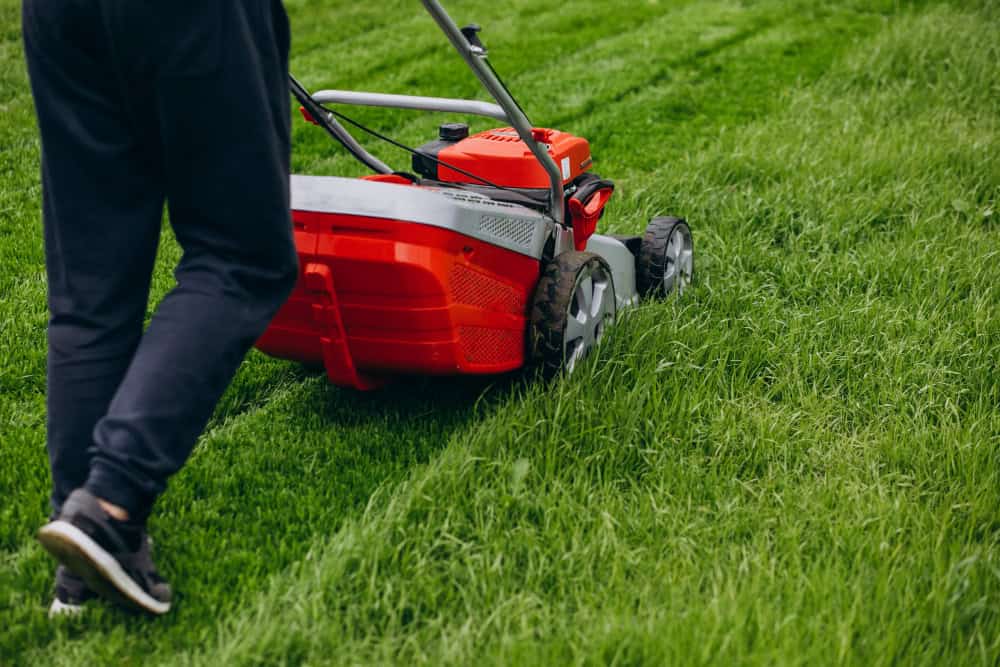How to Mow Your Lawn Without Damaging the Grass
Table of Contents
A well-kept lawn can lift a garden from pleasant to remarkable. Mowing it properly, however, is more than a quick weekend job. It involves striking the right balance between timing, technique and equipment.
Cut the grass too short, mow too often, or use poor methods, and you could find yourself with a patchy, tired-looking lawn that feels anything but inviting.
Thankfully, a few straightforward habits can make a world of difference. With the appropriate approach, you can enjoy thick, healthy grass without spending a fortune or giving up your free time.
Pick the Right Mower for the Job
Choosing the correct mower is a bit like selecting the right coat for the weather. It depends entirely on your garden’s size and temperament.
For smaller spaces, a manual reel mower offers precise cuts and is surprisingly satisfying to use, provided you’re not facing a wild overgrowth. Larger lawns are better suited to rotary models that help cover more ground with far less effort.
Electric mowers appeal to the environmentally minded. They’re quieter, cleaner, and require minimal maintenance. Just make sure the model you choose fits the size of your lawn and the nature of the grass.
The height of your cut matters more than most people realise. Popular UK varieties like fine fescue and perennial ryegrass generally thrive when left a little longer. In contrast, hardy dwarf ryegrass used for play areas tolerates a bit more trimming.
If you’re unsure, a quick chat at your local garden centre can steer you in the right direction.
And if you don’t own a mower? No need to fret. Many local shops offer rentals, giving you the chance to try before you buy and avoid costly missteps.
Set the Blade Height to Suit Your Grass
The height you cut your grass isn’t just about appearances—it plays a crucial role in your lawn’s health.
For most cool-season grasses found in the UK, such as fescue and ryegrass, aim to maintain a cutting height of around 6 to 8 cm during spring and early summer.
In high-traffic areas or shaded spots, a height closer to 8 cm gives the roots more strength. Cutting lower than 4 cm regularly can weaken the grass, making it prone to disease and allowing weeds to move in.
Also, try not to drop the blade height too suddenly between mows. Making small, gradual changes allows the grass to adjust without stress.
Always inspect your mower blades before mowing—blunt or nicked blades will tear the grass rather than slice it cleanly, leaving behind brown tips and frayed patches.
Time Your Mowing to When the Grass Is Dry
Cutting grass when it’s wet is rarely a good idea. Not only do you risk unsightly clumps and streaks, but the mower struggles and the roots may suffer. Moist conditions also create a haven for fungi and other unwelcome issues.
Aim for late morning or early afternoon, once the dew has lifted but before the full heat sets in. The grass should be dry enough for a clean cut, yet not so sun-stressed that it struggles to recover.
Stick to a regular schedule based on how quickly your lawn grows. In addition, if you can, use a mower with a collection bag. Along the way, it offers light mulching benefits by keeping things tidy and spreading clippings more evenly.
Keep the Blades Sharp and Well-Aligned
Think of your mower blades like kitchen knives—when they’re dull, nothing cuts quite right. Blunt blades rip through the grass, leaving it ragged and more susceptible to disease.
Ideally, sharpen the blades every 20 to 25 uses. If that feels a bit ambitious, local gardening services can do it for you without too much fuss.
Equally important is blade alignment. A poorly aligned blade can result in scalped patches or wobbly rows. If the lawn still looks off even after sharpening, it’s worth having the mower professionally checked.
With sharp, balanced blades, your mower becomes a reliable partner in creating a lawn that’s uniform, neat, and easy on the eye.
Change Up Your Mowing Patterns
Always mowing in the same direction is a bit like running your fingers through your hair the same way each day—it starts to look flat and uneven. Over time, repeated passes in the same pattern can create visible tracks and compact the soil.
Switching directions keeps things lively. One week, mow north to south. The next, try east to west. For something a little different, a diagonal approach adds a smart finish and encourages grass to grow upright.
This habit also helps avoid wear in the same areas, giving the soil a better chance to breathe. The result? Stronger roots, better water retention and a lawn that recovers well between cuts.
Make the Most of Your Clippings
Leaving grass clippings behind may seem counterproductive, but it actually benefits your lawn. As they break down, they release nitrogen and other nutrients that support healthy growth without the need for chemical fertilisers.
Mulching mowers go one better by chopping the clippings into tiny pieces. These are absorbed more quickly and won’t smother the grass underneath.
If clumps bother you, simply rake them out lightly after mowing. When spread properly, clippings act like a natural conditioner for the soil. It’s less waste, fewer chemicals and a tidy finish in one go.
Embracing this approach also supports more sustainable lawn care, turning everyday maintenance into a small win for the planet, too.
Don’t Cut Too Often
Lawn mowing is best approached with a bit of moderation.
Cutting too frequently can stress the grass, leaving it vulnerable to disease and drought. Instead of a strict weekly schedule, let the season and growth rate guide you.
During spring, growth tends to be faster, so a weekly trim may be needed. But once summer arrives and growth slows, cutting every 10 to 14 days is usually enough.
Letting the grass grow a touch taller brings several benefits. It shades the soil, locks in moisture, and makes life harder for weeds. Taller grass also develops deeper roots, making your lawn more resilient during dry spells.
Pay attention to how your lawn looks. If it’s thick, green, and evenly cut, your schedule is spot on. If not, it needs a little adjustment.
Water Thoughtfully and Avoid Overdoing It
Watering a lawn isn’t about quantity—it’s about timing and technique. Most UK lawns only require around 2.5 to 3.5 cm of water each week, including rainfall. Anything more can lead to shallow roots, soggy soil and an open invitation to pests and disease.
Early morning is the best time to water. It gives the grass time to absorb moisture without the midday sun drying it out or the evening chill trapping it in.
Soil type plays a part as well. Sandy soil dries quickly and may need more frequent watering, while clay-based gardens hold on to moisture longer.
Using a rain gauge can help you track rainfall and prevent overwatering. If you rely on a sprinkler system, remember to adjust it as the seasons change. What works in May might be wasteful in September.
In general, don’t panic if your lawn goes brown during a dry spell. It’s simply going dormant, saving energy beneath the surface until the rains return.
Conclusion
Getting lawn mowing right isn’t just about neatness. It’s a vital part of helping your grass thrive.
Choosing the right mower, keeping blades sharp, switching up your mowing direction and leaving a few clippings behind all make a noticeable difference.
Add thoughtful watering and a flexible cutting schedule, and your lawn will reward you with vibrant, even growth that holds up beautifully through the seasons.
The best part? None of it requires fancy equipment or excessive effort—just a bit of consistency and care.




